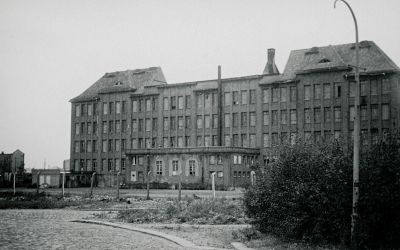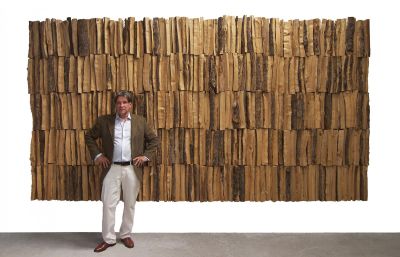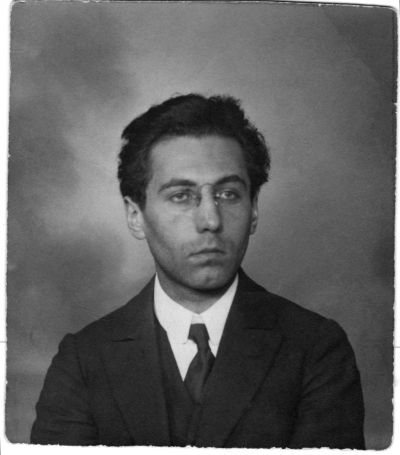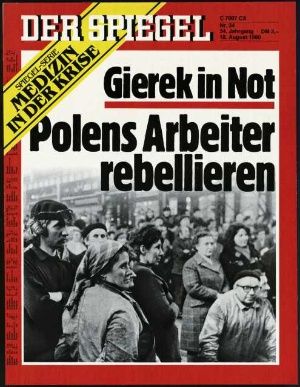Poland’s path to freedom on SPIEGEL covers 1980 to 1990
Mediathek Sorted

A week later, on 25 August 1980, the next issue was published and that cover was also devoted to an event in Poland. The cover of issue 35/1980 was created using a touched-up photo that had been taken in front of the gate to the shipyard in Danzig and which showed workers praying before an image of John Paul II hung on the gateway. (Fig. 9) The touch-up of the black and white photo involved it being coloured blood red so that in a chromatically consistent composition it blended into the whole cover page on which the cover story was announced in bold white letters “Der Aufruhr in Polen – Gefahr für Osteuropa” (“Unrest in Poland – Danger for Eastern Europe”). The first part of the title, “Unrest in Poland”, was also underlined in white. At the same time, the red colouring of the cover clearly depicted just what danger was being hypothesised: Red is the symbol of blood that could flow down on to the workers at prayer. The next issue, number 36/1980, was also dedicated to the crisis in Poland and its cover also took up the Polish issue, although the visual reference to the situation in the country was not as clear as in the two previous printed covers. (Fig. 10) It shows a stylised crumbling fist made of stone. At the time, the caption worded as a leading question read “Kommunismus reparabel?” (“Communism repairable?”)[15]. This cover was created by Ursula Arriens, a very successful artist, who created covers exclusively for the SPIEGEL from 1978 to 1988. With this motif, its creator concisely addressed the progressive erosion of the communist ideology, which was accelerated significantly by the emergence of the trade union movement Solidarność (Solidarity) as a new force. The next cover to feature Poland was the 45/1980 issue of 3 November. (Fig . 11) It was adorned by a colour portrait of Lech Wałęsa, which was given the caption “Arbeiterführer Walesa” (“Workers’ leader”). Under this, in a much larger font, was the title of the cover story “Entscheidung in Polen” (“Decision in Poland”). This issue was published the day before the legalisation of the trade union movement. Shortly afterwards, on 10 November 1980, the government agreed to the registration of the Niezależny Samorządny Związek Zawodowy „Solidarność” (Independent Self-governing Trade Union Confederation “Solidarity”). In doing so, the legal activity of the new organisation began. The cover of the next issue of the magazine did not reveal any direct connection to the political unrest in Poland but it did show the Polish Pope John Paul II almost as a caricature hovering symbolically above the head of Martin Luther. The drawing was created by the German graphic artist and painter Michael M. Prechtl. With this image, the cover addressed the issue of the Pope’s apostolic journey to Germany. (Fig. 12) At the end of 1980, yet another issue of the SPIEGEL appeared with Poland on its cover; the last of five covers within one year that were dedicated to Poland. That period in which Solidarność was operating legally, which is occasionally referred to as the “The Solidarity Carnival”, stirred up hope in the Polish community that at least the monopoly of the State party as the sole representative of society would be broken. From the Federal Republic’s perspective, there was a real fear that the social and political unrest could escalate so badly that there could be an armed intervention by the USSR in Poland. This is the context in which the cover of the 50/1980 issue, which arrived in kiosks on 8 December, is to be understood. (Fig. 13) The black and red colouring showing a Russian tank rolling over a white eagle, the central element of the national emblem of Poland, creates a menacing tension and is designed to make the reader concerned. With this in mind, the cover is worded as a warning. It says “Aufmarsch gegen Polen” (“Deployment against Poland”).
[15] The symbol of the raised fist emanates from the poem “Wladimir Iljitsch Lenin” by Wladimir Majakowski: “(…) Partei - ist die Hand der Millionen Finger, zerschmetternd zur eigenen Faust geballt. (...)“ “((...) party - is the hand of the million fingers crushingly clenched in a fist. (...)”, adapted by Hugo Huppert, see under: http://ciml.250x.com/archive/literature/german/majakowski/majakowski_1924_gedicht_lenin.pdf, (last retrieved: 3/8/2020). The symbol of the fist is also used by left-wing extremist movements, such as autonomism; cf.: https://pl.wikipedia.org/wiki/Autonomizm.










































































































